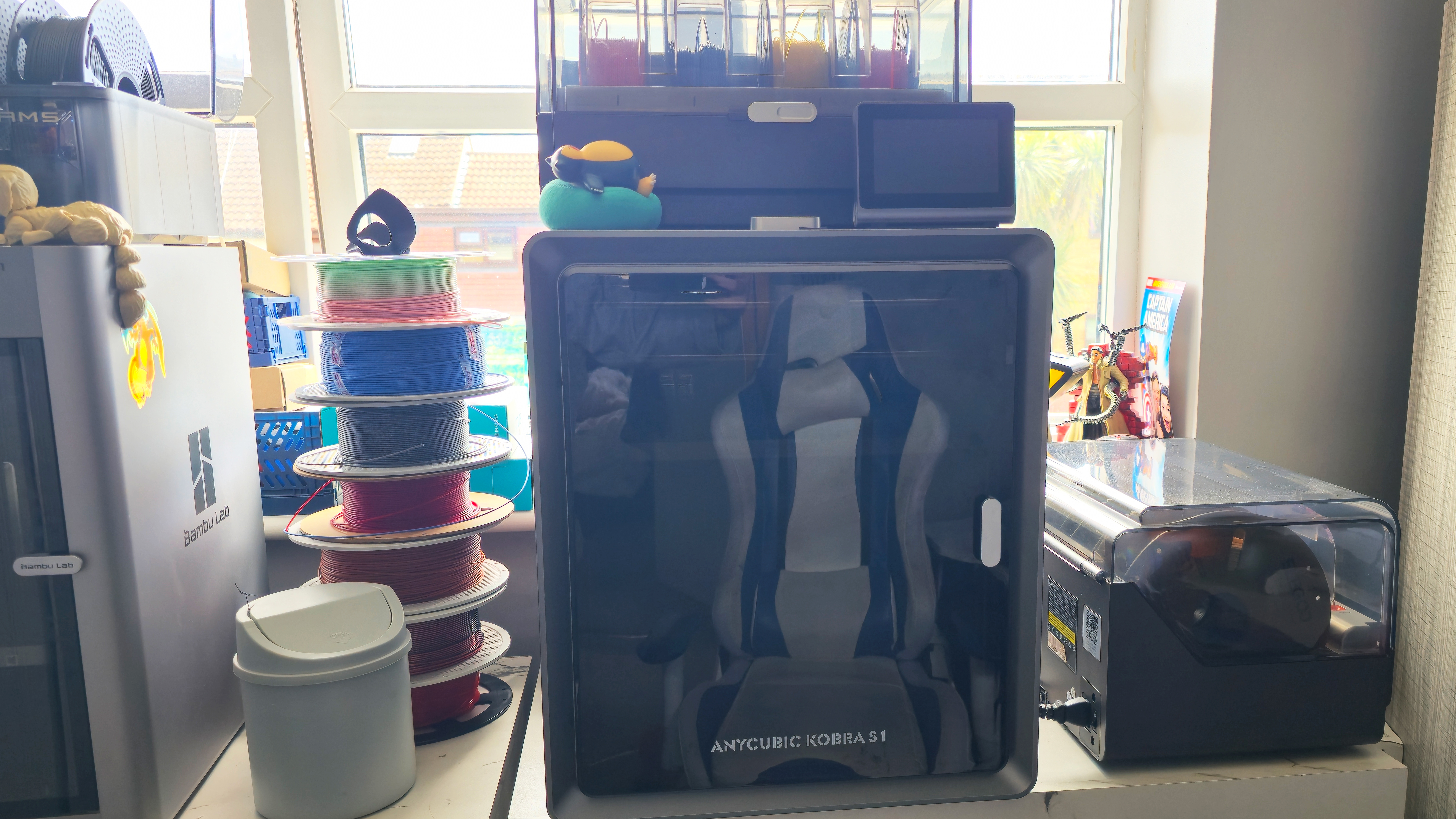10 steps to freelance success
Anna Richardson Taylor gathers the wisdom of experience from those who have made the leap into freelance life.
Whether you're fresh out of college or stuck in a dreary job, most creatives will sooner or later ponder the freelance life. The independent lifestyle of a freelancer provides a powerful lure, with its flexible working hours, varied work and the chance to be your own boss.
For more tips get our FREE 116-page Freelance Handbook now!
But is the freelance grass as green as imagined? Budgeting, forecasting, payment-chasing, tax-returning, accounting, invoicing and networking are as much part of freelance life as creative and professional freedom, expanding horizons and offering the potential for a superior work-life balance.
We've spoken to experienced freelancers who have been there, done that, faced the cash-drought, side-stepped the pitfalls and kept at bay the burnout.
So read on for their advice. A fruitful freelance existence might be just around the corner...
01. Control your finances
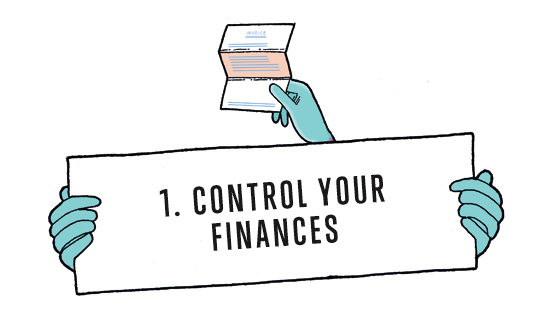
Freelance life is one of famine and feast. Make sure you have adequate savings to fall back on in the event that your cashflow dries up, and educate yourself on the business staples of invoicing and chasing payments, advises illustrator Rod Hunt.
Understanding pricing, copyright, contracts and so on is just as important as the creative work if you want to be successful and sustain your career in the long term.
Joining the Association of Illustrators is a great starting point for budding freelance illustrators, as it offers constant support and advice on contracts. But any freelancer can seek help from someone who has a business brain – an accountant, ideally – or scour resources provided online, to make sure terms and conditions on contracts are in order.
Freelance designer Andrew Warwick suggests charging new clients a deposit upfront. "If you make a new business connection, a deposit is a really good way of gauging how organised they are and how they are with money. If they faff about with a deposit, it's a good indication of how they might be with the actual payment."
Keeping on top of credit control, and knowing when to remind accounts departments when payment is due, is also crucial, but Molly Cockcroft rings a note of caution: "Remember that we all forget to pay bills sometimes, so don't go in all guns blazing when someone is a day or two overdue."
02. Make contacts
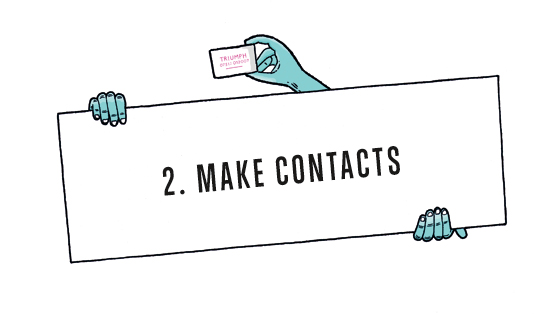
Getting yourself noticed is one of the most important tasks for newly minted freelancers. Drawing on personal contacts is the most natural place to start, and often the most effective.
Sign up to all the usual social media suspects to get your portfolio noticed, participate in the wider creative community and research the right people to link up with. Having a social media feed on a website also boosts search engine optimisation, increasing your chances of getting noticed.
Well-researched speculative emails can still bear fruit with potential clients, but there are also a number of online tools that can help.
Bikinilists.com allows freelancers to send out work to targeted lists of potential clients, YunoJuno.com is an online platform for work opportunities, Workingnotworking.com does a similar job and portfolio platforms such as Behance are also a no-brainer.
However, there's no substitute for getting out and about. Attend events as much as possible, from informal industry meet-ups such as YoIllo.com, to private views or industry shows such as New Designers.
03. Manage your time
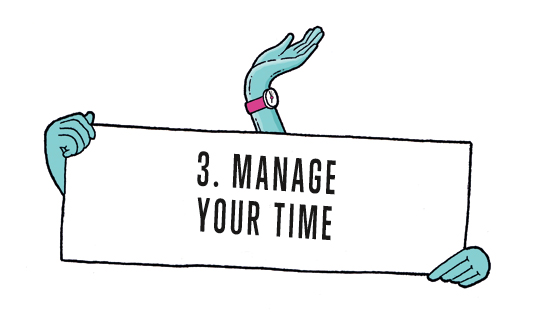
All freelancers approach time-management differently. Andrew Warwick swears by time-tracking software FreeAgent, which helps with invoicing and project management. Others stick to a notepad, pen, sticky notes and a diary, or draw up a list every evening with tasks for the next day.
Whatever your approach, set a clear list of achievable tasks every day and try to stick to it as much as possible within the standard working hours. You also need to be flexible and prioritise on a daily basis, as requirements and deadlines can move.
The one thing you cannot avoid or miss is a deadline
Make time for activities that aren't directly project-related. Put days in the diary to allow yourself to catch up on your books, make new contacts, explore your own creative projects, do your emails and so on. You need time to do the things that keep your business moving.
"The one thing you cannot avoid or miss is a client's deadline," says Dale Edwin Murray. "However and whenever you do the work, you must make sure you leave yourself enough time to complete and deliver a job on time."
04. Deal with clients
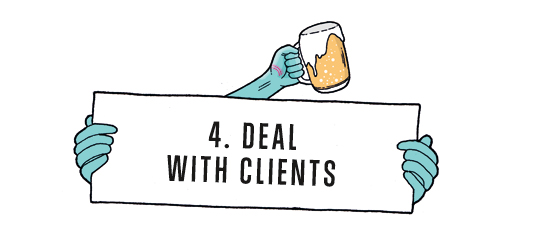
As daunting as securing a commission might seem to freelancers starting out, it is the relationship that follows that can test your mettle most. Every client is different, and you will need to show respect, manage expectations, be able to hand-hold and know when to push back against unreasonable or creatively unsound demands.
Outlining what a client gets for the fee you quote can be helpful, says designer Molly Cockcroft: "For example, how many concepts you will provide and how many amends they can make. Sometimes things need to be more fluid than this, but if you can start this conversation at the beginning, it saves all sorts of hassle."
Generally, if you are efficient, honest and fairly easy-going to work with, clients will come back to you, reckons illustrator Ben O'Brien. Many illustrators make the mistake of worrying too much and emailing the client again and again, he adds.
If a relationship with a client nonetheless gets a little tense, try to keep a positive attitude, recommends designer David Bonas. "Don't let the situation get the better of you, and seek advice from someone with more experience before making rushed decisions."
After all, the client is king, and even difficult clients may merely be suffering pressure from their bosses. If you remember to treat clients like people and not merely clients, says illustrator Lizzie Mary Cullen, you will begin to understand where they are coming from.
05. Manage your money
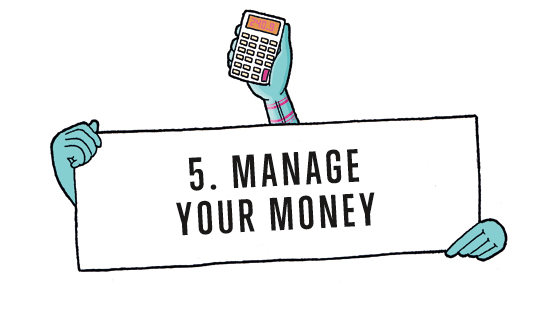
Dealing with the legal and financial requirements is one of the more overwhelming facets of self-employment. Learning the basics and finding a good accountant with experience in the freelance market – or using an online service like Crunch.co.uk or Ship Shape Pay – is key.
"I have always had an accountant to do my years' taxes so that I know everything is above board, even when I started out," says illustrator Ben O 'Brien. "I was pretty sure that the fee I was paying was less than what he was saving me in taxes."
Putting aside the relevant percentage of takings for tax every time you get paid is also a no-brainer, but all too often neglected. "You have to quickly get your head around tax and make sure you set enough aside to pay your tax bill when it comes," says illustrator Dale Edwin Murray.
"I actually enjoy the sticking down of receipts," says illustrator Serge Seidlitz, "and treat my ring binders with the same kind of respect that I used to have for the handmade scrapbooks and sticker books I kept when I was a kid. It's much easier and less stressful to do as you go."
Next page: 5 more steps to freelance success

Thank you for reading 5 articles this month* Join now for unlimited access
Enjoy your first month for just £1 / $1 / €1
*Read 5 free articles per month without a subscription

Join now for unlimited access
Try first month for just £1 / $1 / €1
Get the Creative Bloq Newsletter
Daily design news, reviews, how-tos and more, as picked by the editors.

The Creative Bloq team is made up of a group of art and design enthusiasts, and has changed and evolved since Creative Bloq began back in 2012. The current website team consists of eight full-time members of staff: Editor Georgia Coggan, Deputy Editor Rosie Hilder, Ecommerce Editor Beren Neale, Senior News Editor Daniel Piper, Editor, Digital Art and 3D Ian Dean, Tech Reviews Editor Erlingur Einarsson, Ecommerce Writer Beth Nicholls and Staff Writer Natalie Fear, as well as a roster of freelancers from around the world. The ImagineFX magazine team also pitch in, ensuring that content from leading digital art publication ImagineFX is represented on Creative Bloq.
